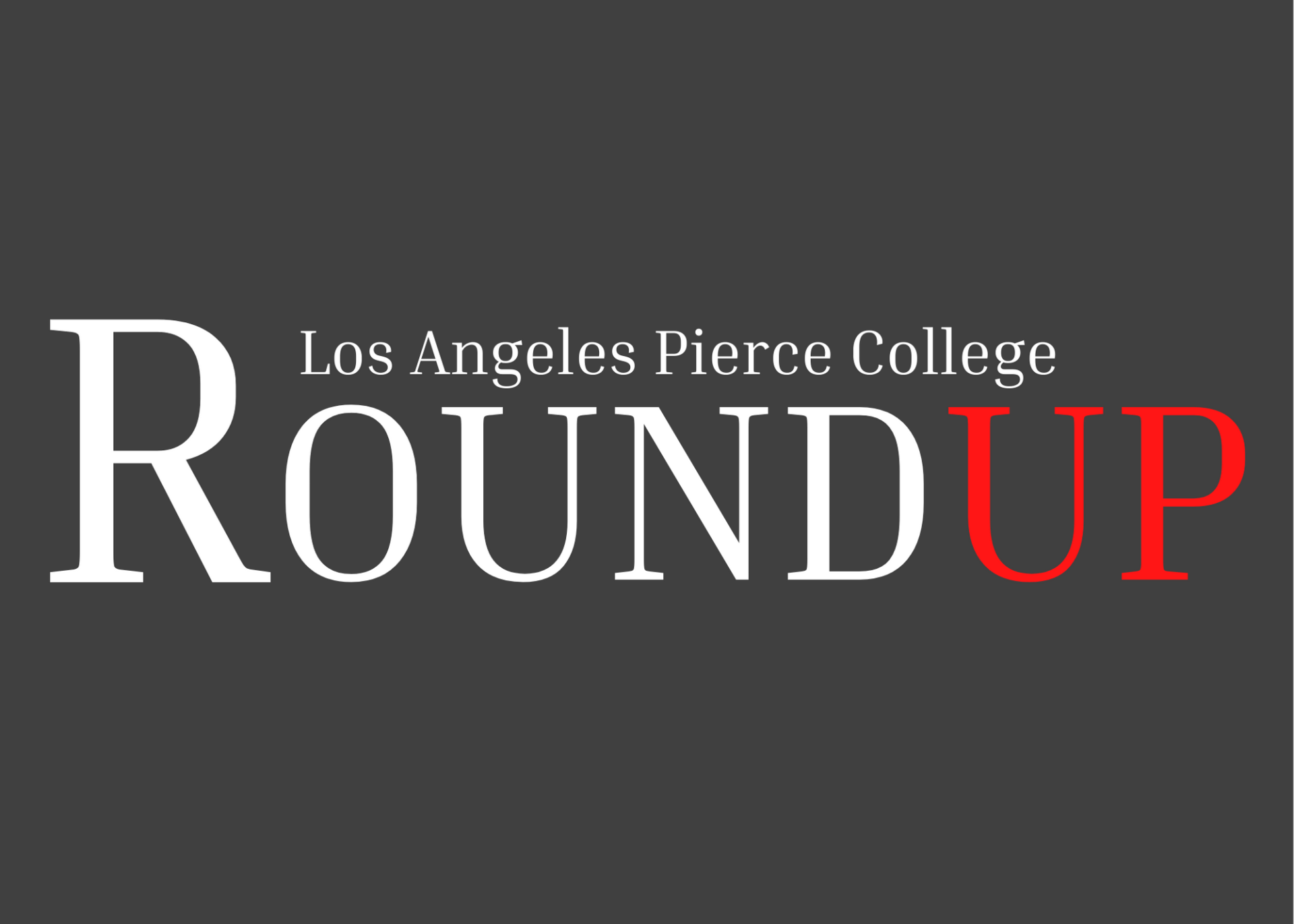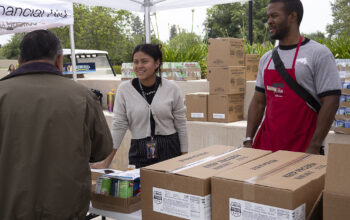One after another, attendees pressed the lens of their smart phones against the telescope eyepiece and snapped photos of the magnified Half Moon.
Five telescopes pointed at the night sky as more than 30 people attended Telescope Night on Thursday, May 12, on the second floor of the Center for Sciences.
Jupiter’s four galilean moons and the prominent cloud belt across its atmosphere were visible to the human eye through the telescope. The Moon, Mars, Saturn and star clusters were some of the other attractions on display.
Current and former students along with parents came to share their interest in astronomy. Dale Fields, department chair of Physics and Planetary Science, said he does not only enjoy teaching students inside a classroom, but outside too.
“Taking a look at a variety of things out there in space, things like planets, the moon, even a couple of galaxies,” Fields said. “We’re just giving a chance to let people see something they’ve never seen before.”
“Computer screens are not nearly as real as looking through a telescope and looking at something with your own eyes,” Fields said.
Setting up and focusing the telescopes was a challenge for Physics and Planetary Sciences Adjunct professor Carolyn Mallory. It took her about 30 minutes to set up one of the telescopes to point at the moon.
“We have two sets of telescopes out here,” Mallory said. “One of them is a motorized telescope and it finds the object you want to find using the GPS satellite, and the other one is old fashioned. You move it around and try to find it.”
One of the telescopes used is called Dobsonian. It’s one of the easiest and lightest weight telescopes there is, and also one of the least expensive ones, about $300, according to Mallory.
“This makes it a practical hobby,” Mallory said. “It’s just a pleasure.”
“We’re seeing, of course the moon, but we’re also seeing Jupiter,” Mallory said. “Mars and Saturn are pretty close together, but the air over the horizon is pretty thick and makes it hard to see.”
Former Pierce student and retired Doctor Paul Milberg took Fields class last fall semester and saw there was going to be a Telescope Night on Fields website and decided to come.
“It was a great class, he [Fields] was a fabulous teacher. I really liked him,” Milberg said. “He loves teaching and he just loves his work.”
Loretta Walsh, Milberg’s girlfriend, has been to to Fields’ viewings before and enjoyed these events since.
“He [Milberg] loves coming to these,” Walsh said. “So he brings me and I learn a lot from him.”
Walsh attended Fields planetarium show last semester and enjoyed the viewing.
“It was fabulous he took us back in time,” Walsh said.
Students from other schools attended Telescope Night. Such as Kerem Sanli, eighth grade student from Hale Charter Academy.
Sanli’s mother, Senem brought him to Telescope Night since his science teacher recommended him and his family to attend.
“I’m very excited, it’s my first time to look through a real telescope,” Sanli said. “His [Sanli] teacher told us about this and recommended us to come.”
Students were bonding and sharing their knowledge about astronomy and space while looking through the telescopes.
This is Pierce student Leetal Gohen’s first Telescope Night and is interested in astronomy and has had two of Fields classes this semester.
“You get to make observations, what’s closer, what’s further, some of these stars here look so small, but in reality they’re a hundred times bigger,” Gohen said.
Maria Mirzaie took Mallory’s astronomy class a a few semesters ago and comes to these viewings for fun.
“You’re looking at something so far away and being able to see it right there, It’s crazy,” Mirzaie said. “You’re just so used to being here, you don’t realize what’s out there.”
Mars was difficult to see due to trees blocking the view, but the moon was one of the main attractions people were talking about the entire night.
Joshua Becker, astronomy major and former Fields student was assisting him with setting up the telescopes for people to use.
“You can learn so much about the solar system and space using a telescope,” Becker said. “You’ll be able to see Jupiter and all the three rings tonight.”
The next Telescope Night is not planned but Fields organizes them in the beginning of the semester, so he encourages students to check out when the next event is on his Pierce College website.



